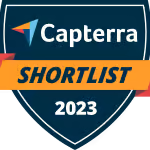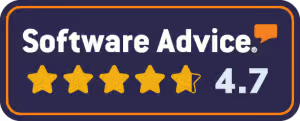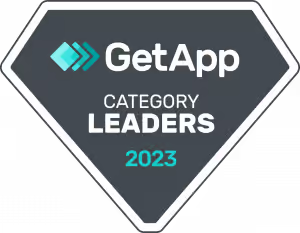Everyday, we receive thousands of marketing messages, whether we see them on social media read them in an email, or see them as we drive to work. Although there’s no concrete number, most marketers agree the average person is exposed to 5,000 to 10,000 ads on a daily basis.
But how do you stand out from all the noise? How does your marketing transcend and actually capture people’s interest? The answer is using data to personalize your messaging.
Surprisingly, even though we’re constantly being inundated with ads, most consumers say they’d pay more attention to a personalized ad than a non-personalized. According to a 2023 report by Statista, 90% of U.S. consumers find marketing personalization very or somewhat appealing. And Wunderkind’s 2023 Marketing Trends report found that 7 in 10 Americans expect brand communications to be tailored to their preferences.
Industry professional Ross Furukawa, President and Co-Founder of the Santa Monica Daily Press, shares an in-depth look at how his team collects data and uses it to improve their top-of-funnel marketing campaigns.
How to collect data for top of funnel marketing.
Ross’s team uses several forms of data, including using their existing data, data capture tools on the website. For outbound marketing, his team usually relies on “scraping” data, a process of capturing all available data on any number of websites and saving it for future use. At the Santa Monica Daily Press, Ross shared that Google Maps and LinkedIn are their main go-to’s for data scraping.
Through Google Maps
“Google Maps is a little more open. You can go and grab, you know, phone numbers, email addresses, URLs. We just did a campaign where we wanted to find all the physical therapists offices. So we did a data scrape of our trade market, and we scraped every physical therapy office.”
Through LinkedIn
“We use LinkedIn quite a bit, but we don’t pay for Sales Navigator. We have this tool that goes and creates connections all day long. It’s got a whole sequence. Let’s say we’re going after yoga studios in Santa Monica. Then we look up by title like marketing or anybody who would be making an advertising decision. It kicks back a couple hundred results.”
Then, the team uses the data they’ve scraped to create a personalized connection message. Furukawa explains: “So then, we put in the tool a very personalized message. Something like: ‘Hey, [first name token], we just did a series of wellness articles we thought you might be interested in. Just want to connect.’ And then provide a link to the articles. It then sends out a follow request to that person with the message. Usually, that’s enough to prompt somebody to follow my sales rep.”
“It’s set up so that if they have any questions, my rep gets a ping, and they answer back as a human. But what it does is create a network of people so once they follow somebody, they get a follow back. And once that happens, you have their contact information.”
This tool allows his sales team to be constantly creating connections and pulling data all day long without spending the long hours prospecting. “We have it set to run during business hours throughout the week. So a new sales rep for me, if they’re coming in with like a couple hundred connections through LinkedIn, after about four weeks they’ll have a thousand. After nine weeks, they’ll have a couple thousand. And so that’s leveraging data, leveraging context. It’s just a good tool.”
Using Data to Create Personalized Messages for Warmer Leads
But Furukawa and his team don’t just take all the data they scraped and immediately dump it into their CRM. They have a whole process for weeding through the data and warming up leads. “We don’t dump the data into Ad Sales Genius (ASG) until we know it’s a warmer lead, because we don’t want to gum up our database.”
So instead, his team takes a three part approach. First, they send an email campaign. “We’ll send out a campaign through MailChimp that just says, “Hey, we want to talk to you,” and we’ll personalize it with their first and last name if we have that data and include a call to action.”
Then they leave a personalized voicemail at the number they found, using Drop Cowboy. “Then, we drop a voicemail to the publicly available number. We make that voicemail very specific to the verticals. We just record a message saying, ‘Hey, it’s Dina. I want to talk to you about something really quick. I know you guys are a physical therapy office. Give me a call back.’”
This approach helps to eliminate much of the cold calling process, while still leveraging the data collected to give the message a personalized feel. “So it’s a way we can go out and drop 500 voicemails out there. So people are calling us back,” Furukawa said.
Finally, they send a text message to the same number. “Those aren’t always super successful because sometimes it’s an office landline that Google is listing. Sometimes they’re cell phones, but most of the time it’s a landline. We don’t have a really high delivery rate on that. But the voicemail, we have a really high delivery rate on.”
Calculating the Results of Integrating Data into a Campaign
“Depending on the vertical,” Furukawa explained, “We get anywhere from a 3% to a 10% return rate of people calling us back, starting a conversation. You know, there’s the adage in ad sales that on an outbound call, if you’re getting a 3% return, that’s great.”
“If 3% of your deals convert, that’s a pretty high percent for cold calling. So we’re taking all of those cold email, cold call, cold text, and doing them all at the same time so people know we really want to get a hold of them—and that initiates the callback. Callback is usually in the world of like 15%. And then those we convert from that callback are about 3 to 10%, depending on the product and who we’re calling.”
Then, from there, the team uses MediaOS to keep track of the leads that respond. “So again, we want to keep our MediaOS database clean. So we use RingCentral, and we’ve got that data tied into MediaOS. So once we get a return phone call or return email, we create the lead in MediaOS. Then from there, we start logging all the communication back and forth. It’s tied into our email, and into RingCentral. I don’t think it’s tied into our SMS because it doesn’t have an integration with DropCowboy.”
Best Practices for Personalizing Mass Email Marketing Campaigns
After sharing how his team performs the data scrape, Furukawa explained some email best practices that’ve been working for them at the Santa Monica Daily Press.
1. Personalize the subject line.
“Putting their first name in the subject line works very well. Typically, open rates double on average if you personalize the subject line. Not all the time, but most of the time. We just did one that was really successful. We said, ‘Invite for [token name] to join us in celebrating the high school graduation edition.’”
2. Personalize the “to” field.
“So if we have a first and last name, we put those tokens in the ‘to’ field so it doesn’t just show up as an email address, it shows up as their name. That gets past spam filters better because it’s using their proper first and last name.”
3. Personalize the information inside the email.
“Just like with the specific subject line tokens, we use their tokens within the email as well. An example would be, ‘Hey [token name],’ in the first line. Then maybe we drop their company name in there as another token. So: ’We thought that ABC physical therapy might want to know about this LA marathon that’s happening here in Santa Monica. If you want to participate and reach 26,000 runners, we have direct access to them. If it’s something you’re interested in, give me a call.’”
4. Provide links to relevant content.
“Then we try to make the email as personalized as possible. We drive links to content just to get people interested. So if we’re doing the education thing, we might say, ‘Hey, I bet you didn’t realize Santa Monica High School has 15 kids going to Berkeley next year.’ And then we’ll have a link to that story.”
5. Personalize the feel of the email.
“We don’t use any type of graphical elements. For us, that works really well. If it looks like it’s from a list, the open rates plummet. If it has any type of graphical element in there—besides maybe a logo at the very end, like you’d have in an email signature— it plummets. We made ours look like somebody typed an email and personalized it as just a straight email. That’s just what over time we figured out works best.”
6. Personalize the CTAs throughout the email.
“We don’t just give CTAs to buy something. We give CTAs throughout to see content they might be interested in. Then, the final CTA is to fill out this form, or in this case, buy an ad for this edition. Or, if you want to talk to somebody, we’ll have a click-to-schedule-a-call link in there as well. Not just a straight up click to call.”
Experience Share Q&A: Ross Furukawa
Q: What are some key trends you’re watching right now?
A: Sequencing. Everybody uses sequencing, but to do it really well takes thought and takes time to set those up properly. You really have to think as a customer. You know, we have what we want to say as marketers, but you have to put yourself in the seat of a busy business owner. Think about what CTA would get you to make that phone call or even just respond and not let it fall into your unread box. That’s what we’ve been spending a lot of time thinking about.
Q: What are you reading right now?
A: The book Smart Brevity is definitely a trend within our company, but being really concise with your business communication. Using the least amount of words. They say, “Brevity is confidence. Length is fear.” When people write long intro sentences when you could get that done in five words, the propensity of people reading it and actually opening it goes way down. So that’s one of the trends we’ve been working on. That book was written by the founders of Buzzfeed and Axios.
Q: What are some places you go for content to stay up to date on the publishing market?
A: I’m kind of all over. I’m a member of a lot of the trade organizations, whether it be LION. I’m a Google News Accelerator. I’m a Goldman Sachs News Accelerator, or a small business accelerator. I’m in a lot of different Slack groups. I read Pointer quiet a bit, just to keep up on that stuff. But yeah, not one specific place.
Q: What podcasts do you listen to?
A: So when it comes to AI and the business and just staying up on tech, I really like Scott Galloway, he has a podcast with Kara Swisher. She’s a tech journalist. So saying current on those trends, I think are really helpful in the day to day publishing business. Scott Galloway is called Prof G, and the one with Kara Swisher is called Pivot.







